Fujifilm X-Mount Lenses: Your Complete Buying Guide
If you're looking for a Fujifilm X-mount lens to spark your creativity, this article might have the answers you need.
If you don't know much about camera lenses, we recommend checking out the article linked below first.
Further Reading:
The Ultimate Camera Lens Buying Guide: Your Path to Perfect Shots
If you're still unsure about getting a Fujifilm camera or want to learn more about their lineup, you can also read our Fujifilm camera buying guide linked below.
Further Reading:
Alright, now that you're all set, let's dive in!

In this article, you will learn:
- Overview of Fujifilm X-Mount Lenses
- Recommended Fujifilm X-Mount Lenses
- Post-Processing: Taking Your Images to the Next Level
Overview of Fujifilm X-Mount Lenses
Fujifilm doesn't make full-frame cameras, so all Fujifilm X-series mirrorless cameras use APS-C sensors. As a result, all Fujifilm X-mount lenses are designed specifically for APS-C cameras and work seamlessly with the X-series.
Since APS-C sensors are smaller than full-frame sensors, the same lens focal length produces a tighter image, meaning a narrower field of view. This difference is due to the crop factor, which is typically 1.5x for APS-C sensors.
For example, a 35mm APS-C lens on a Fujifilm X-series camera gives a field of view equivalent to a 52.5mm lens on a full-frame camera, making it ideal for portraits.
Currently, there are nearly 100 Fujifilm X-mount lenses available, making it the third-largest mirrorless lens system, following Sony E-mount and the Micro Four Thirds system led by Panasonic and Olympus.
Fujifilm was late to open its X-mount protocol. Before 2020, apart from three Zeiss Touit lenses, all autofocus X-mount lenses were made by Fujifilm.
However, in recent years, as Canon and Nikon have expanded their mirrorless offerings, Fujifilm has welcomed third-party lenses from brands like Tokina, SIGMA, Tamron, and Viltrox.
For example, SIGMA has been actively expanding its lineup of Fujifilm X-mount lenses in recent years and has already released several models.
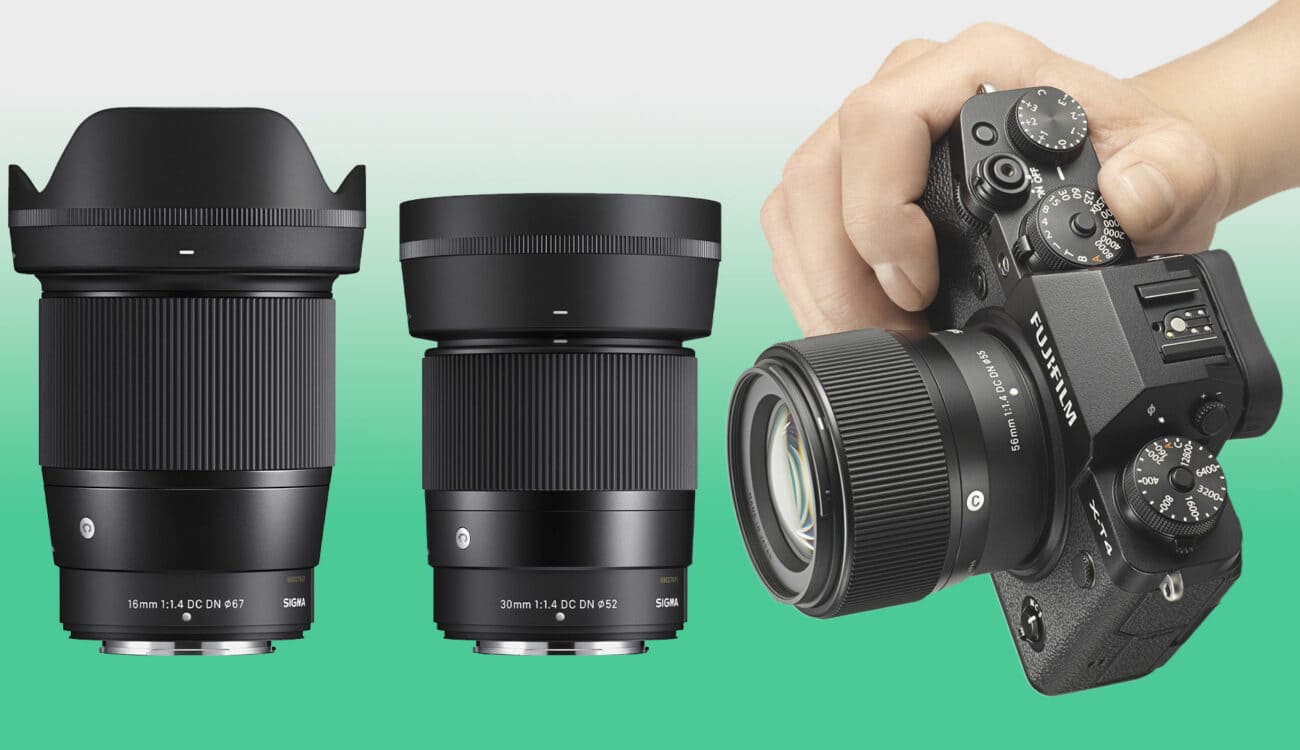
Fujifilm's native X-mount lenses are categorized into two series: XF and XC. While both serve similar purposes, their differences lie in build quality and pricing:
- XF Lenses: Feature metal bodies, high-quality craftsmanship, and are aimed at professional users.
- XC Lenses: Use plastic bodies, making them lighter, more compact, and budget-friendly.
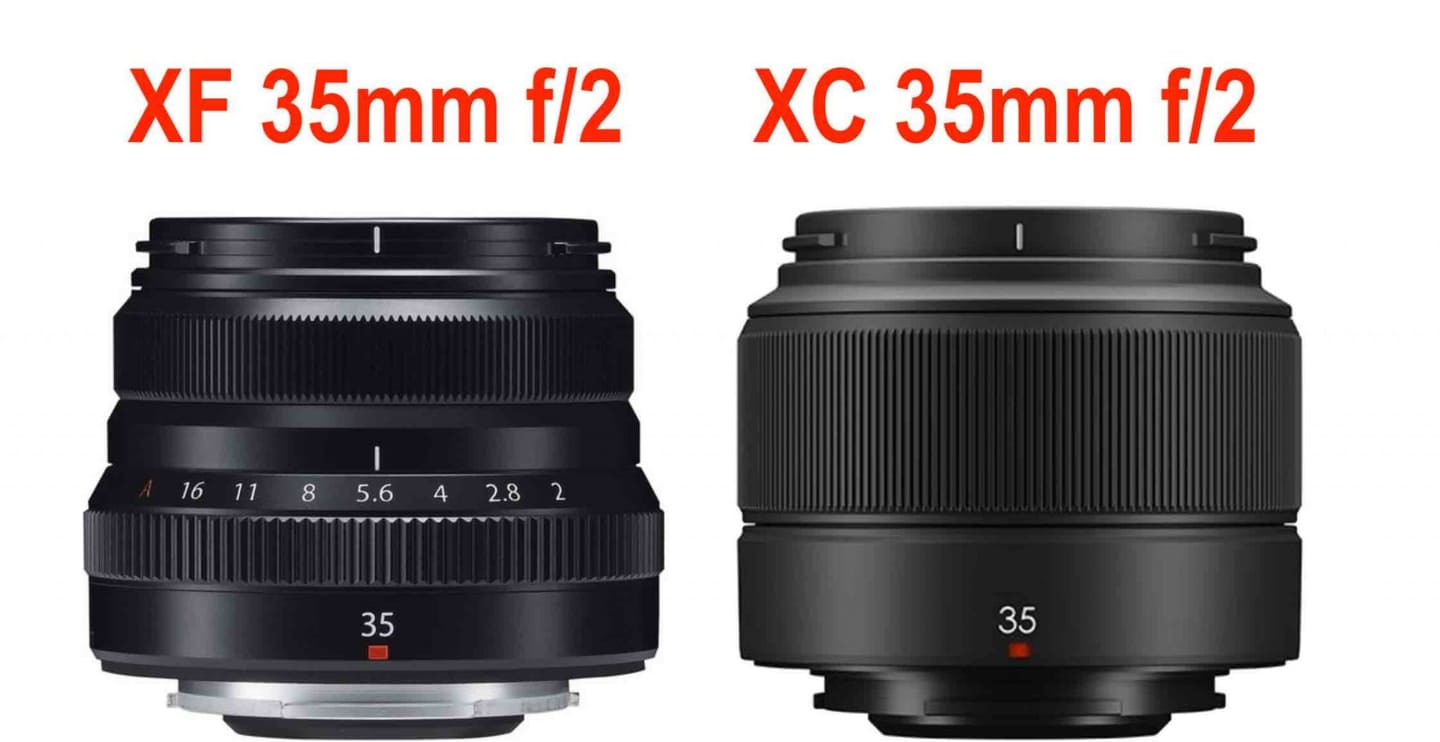
Recommended Fujifilm X-Mount Lenses
Here is our subjective list of recommended Fujifilm X-mount lenses based on real-world use. Lenses not mentioned here aren't necessarily bad — they just didn't make this list.
1. Standard Zoom Lenses for Everyday Use
Standard zoom lenses are versatile and easy to use. They typically cover wide-angle to medium telephoto ranges, making them ideal for capturing most everyday scenes. We suggest this as your first lens if you're new to photography.
Budget Option: Fujifilm XC 15-45mm F3.5-5.6 OIS PZ
This is Fujifilm's most basic, affordable standard zoom lens. It's compact, lightweight, and good enough for casual daily shooting. While inexpensive, it's usually only sold as part of a kit with entry-level Fujifilm cameras, not as a standalone lens.
Mid-Range Pick: SIGMA 18-50mm F2.8 DC DN
This lens offers an equivalent focal range of 27-75mm with a constant F2.8 aperture. It has excellent optical performance, a small, lightweight design, and great portability, making it an ideal everyday lens for shooting on the go.
Alternative with More Reach: Tamron 17–70mm F2.8 Di III-A VC RXD
This lens has a broader focal range, better telephoto reach, and built-in stabilization. However, it's nearly twice as heavy and bulky as the SIGMA and is often criticized for its plastic build quality and slightly reduced image sharpness.
It's a good option for users who prioritize range over portability and feel.
Fujifilm Native Option: Fujifilm XF 16-50mm F2.8-4.8 R LM WR (2024 release)
While it lacks the constant F2.8 aperture of the SIGMA, it offers a wider field of view, weather sealing, and internal focusing, thanks to Fujifilm's native design. Though the price is steep, it becomes more affordable when bundled with a camera body in a kit.
High-End Choice: Fujifilm XF 16-55mm F2.8 R LM WR
This is Fujifilm's flagship standard zoom lens, featuring top-notch optical quality and a constant F2.8 aperture. It lacks image stabilization and is heavier and bulkier, but for Fujifilm users who demand the best image quality, it's the ultimate choice.
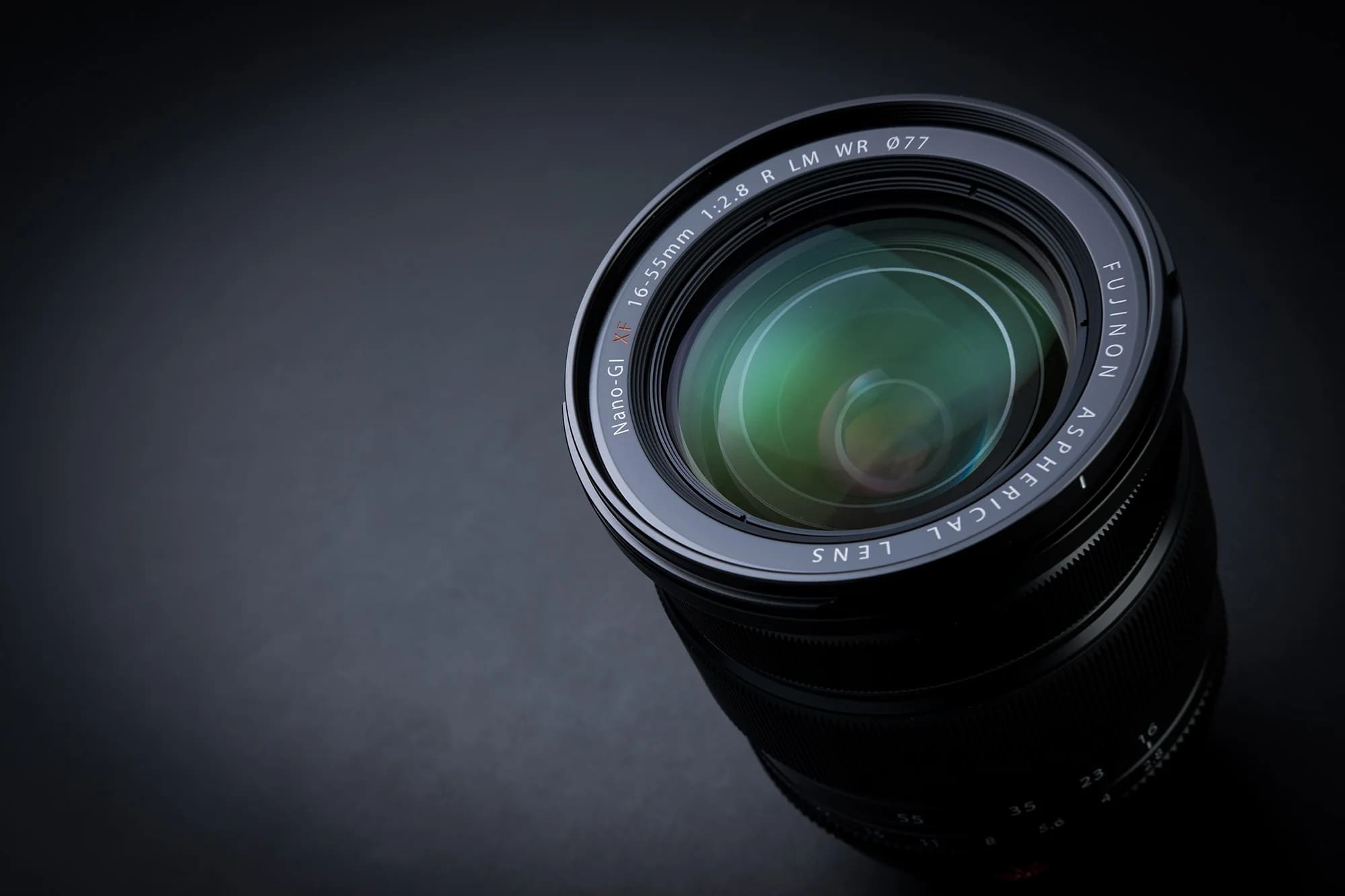
2. All-in-One Zoom Lenses for Travel
When traveling, you'll encounter a wider variety of landscapes and subjects, requiring a greater range of focal lengths than everyday shooting. This is where all-in-one zoom lenses come in.
An all-in-one zoom lens covers a broad focal range, from wide-angle to telephoto. It's perfect for those who want to travel light with just one camera and one lens.
These lenses are great for users who shoot diverse subjects and prefer not to switch lenses frequently.
Top Pick: Tamron 18-300mm F/3.5-6.3 Di III-A VC VXD
Tamron excels in all-in-one zooms, and this lens is a prime example. With a 16.6x zoom range (equivalent to 27-450mm), it offers impressive telephoto capabilities, making it ideal for capturing everything from landscapes to distant subjects like wildlife, sports events, concerts, or even the moon.
The optical quality is solid for such an extreme zoom range, and it even has decent macro capabilities. If you travel often and want just one lens, this is arguably the best choice.
Here is an example from Tamron's official image to showcase the zoom range of the 18-300mm lens.
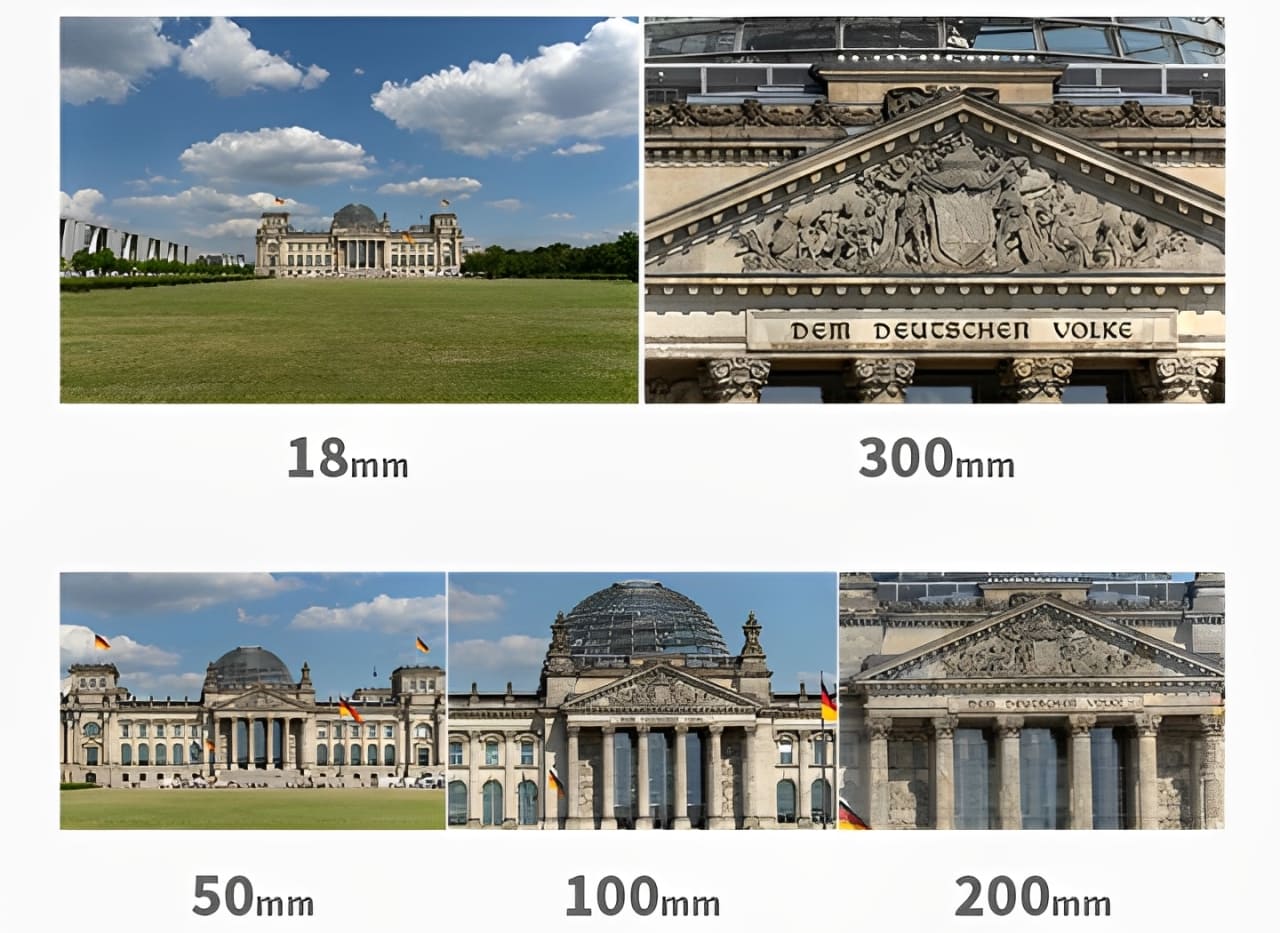
Fujifilm XF 18-135mm F3.5-5.6 R LM OIS WR
This is Fujifilm's most versatile native zoom lens with the highest zoom ratio among its lineup. While it's more expensive than third-party options, it's relatively affordable for a Fujifilm lens. Compact and lightweight, it's a good entry-level choice for travel and general use.
Fujifilm XF 18-120mm F4 LM PZ WR
Although its zoom range is shorter and it lacks image stabilization, this lens features a constant F4 aperture, stepless aperture control, motorized zoom, and internal focusing.
It's designed with video creators in mind, making it a premium option, though not the best fit for casual photography enthusiasts.
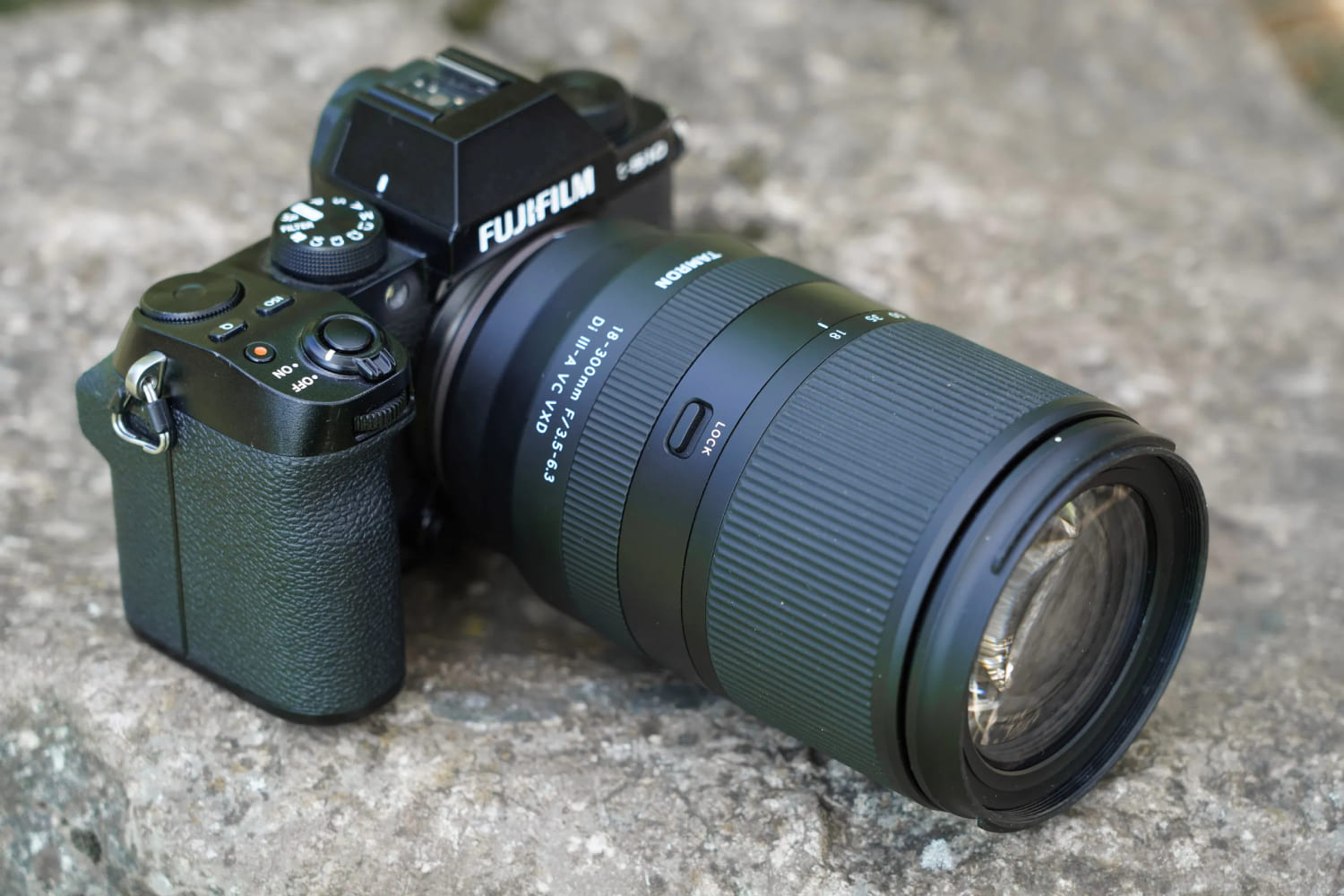
3. Versatile Standard Prime Lenses
Compared to similar zoom lenses, prime lenses often stand out for their better portability, superior image quality, larger apertures, and lower prices — making them consistently popular choices.
However, because prime lenses have a fixed focal length, their use can be more specialized and requires users to think more about framing and composition. For beginners, prime lenses are better as a secondary purchase after trying a zoom lens.
Standard prime lenses typically have an equivalent focal length of around 50mm (which translates to 33mm on Fujifilm's APS-C cameras).
This focal length is incredibly versatile, perfect for street photography, portraits, food shots, and more. It's great for beginners looking to try their first prime lens and for experienced photographers who work with varied subjects.
Top Recommendation: SIGMA 30mm F1.4 DC DN
This lens strikes an excellent balance between specs, performance, size, and price. The Sony E-mount version is already renowned for its great value, and in February 2022, SIGMA released the X-mount version for Fujifilm.
It directly addresses the price gap in Fujifilm's lineup of prime lenses. Fujifilm's F1.4 lenses often come at a steep cost, so while this Sigma lens may not outperform Fujifilm's own primes, it offers incredible value for users who want a high-quality F1.4 lens without breaking the bank.
Budget Option: Viltrox 33mm F1.4 STM XF
For those on a tighter budget, the Viltrox 33mm F1.4 is a solid alternative. It's cheaper than SIGMA's lens and comes in multiple colors, including black, silver, white, and red.
In terms of image quality, the Viltrox lens falls slightly behind SIGMA when it comes to sharpness and chromatic aberration control. However, considering its lower price, it's still a fantastic option for Fujifilm users who want to experience the benefits of a large-aperture lens at the lowest possible cost.
For Fujifilm Loyalists: Fujifilm XF 33mm F1.4 R LM WR
If you're after exceptional image quality, have a preference for Fujifilm's brand, or simply love its design, the Fujifilm XF 33mm F1.4 is an excellent choice.
Although it shares the same maximum aperture as the other lenses mentioned, it offers superior edge-to-edge sharpness and better chromatic aberration control. It's also weather-resistant, making it a top-tier option for those who prioritize build quality and performance.
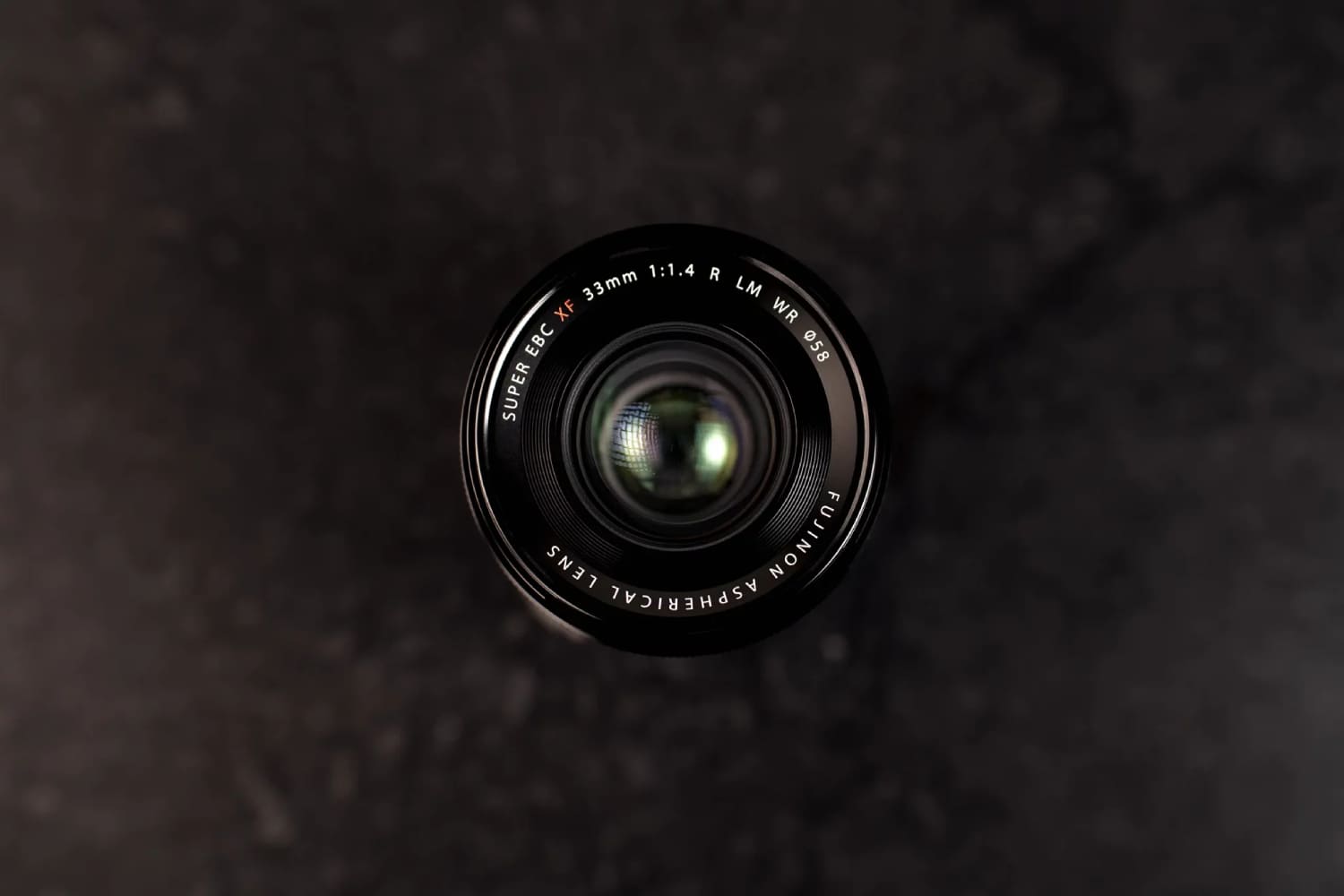
4. Portrait-Ready Medium Telephoto Prime Lenses
For professional portrait photography, lenses with an equivalent focal length between 85mm and 135mm (about 56mm to 90mm on Fujifilm's APS-C cameras) are often the go-to choice.
These medium telephoto lenses, combined with a wide aperture, help isolate your subject by creating a beautiful background blur. They minimize distractions from the environment, making it easier to focus on the subject.
Top Recommendation: SIGMA 56mm F1.4 DC DN
The SIGMA 56mm F1.4 is our top pick for portrait prime lenses. It offers fantastic value and has received excellent feedback from photographers. Words honestly don't do justice to how great this lens is — it's simply a must-have.
Budget Option: Viltrox 56mm F1.7 XF
If you're on a tight budget, the Viltrox 56mm F1.7 is a much more affordable alternative. Its low price might raise some doubts, but various tests have confirmed its image quality is more than satisfactory.
Plus, it's compact and lightweight, making it a great choice for beginners looking to explore portrait photography without spending too much.
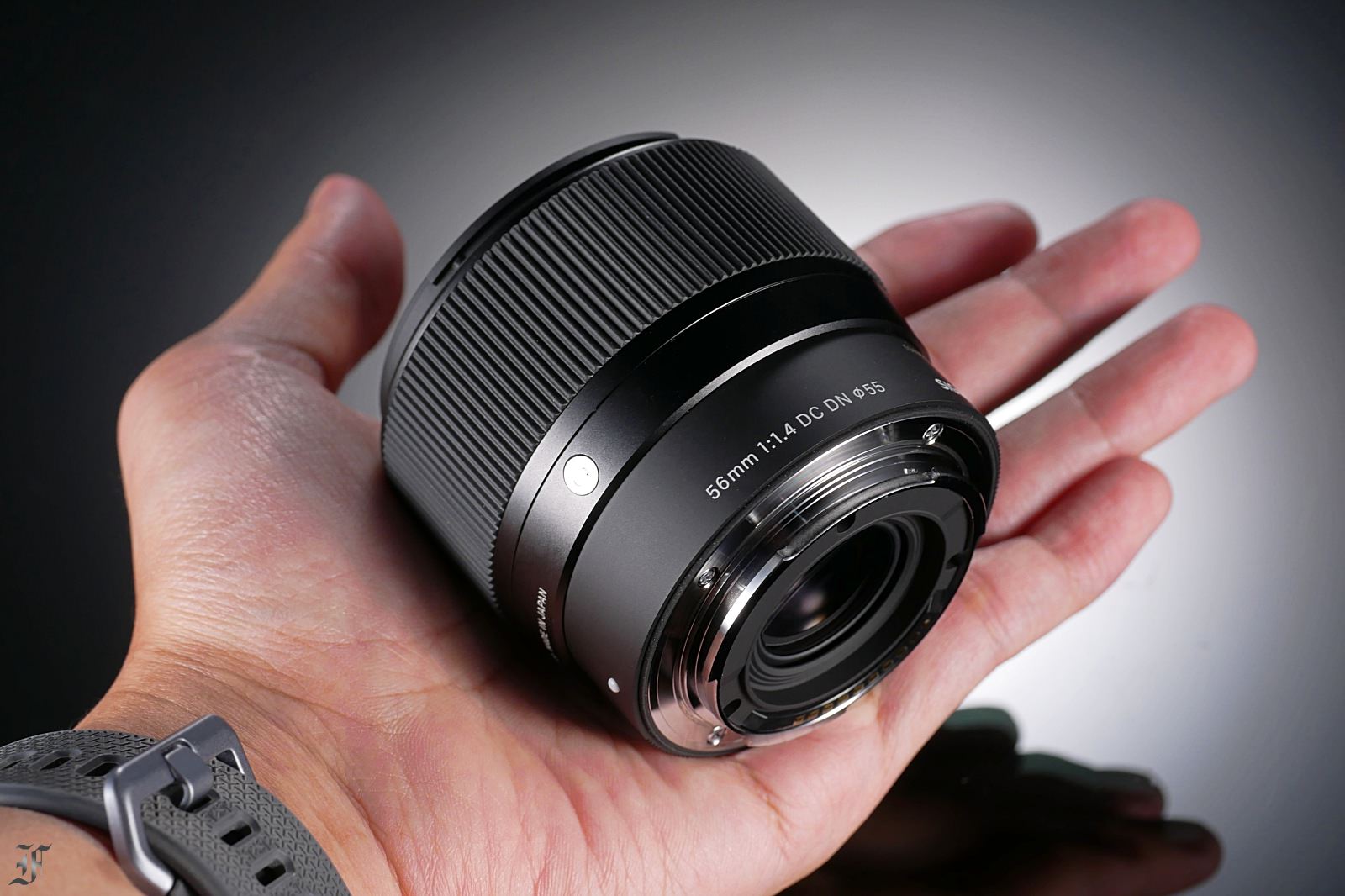
5. Telephoto Lenses for Wildlife Photography
Telephoto lenses are a favorite among photography enthusiasts. They're ideal for capturing distant subjects, making them perfect for landscapes, wildlife, and sports. In recent years, they've also become popular at concerts and similar events.
Mid-Range Fujifilm Telephoto Lenses
Fujifilm offers two solid mid-range telephoto options:
- Fujifilm XF 55-200mm F3.5-4.8 R LM OIS (Equivalent to 83-300mm)
- Fujifilm XF 70-300mm F4-5.6 R LM OIS WR (Equivalent to 105-450mm)
Choosing between them comes down to the distance of your usual subjects. If you frequently shoot at focal lengths over 300mm equivalent, 70-300mm is the better choice. Otherwise, the 55-200mm is more practical with its larger aperture, lighter weight, and lower price.
Budget-Friendly Option: Fujifilm XC 50-230mm F4.5-6.7 OIS II
If you're on a tight budget, the Fujifilm XC 50-230mm F4.5-6.7 OIS II is worth considering. While its build quality, image sharpness, and maximum aperture are not as strong, it's an affordable way to experience telephoto photography.
Is It Worth the Investment?
For casual photographers who don't shoot distant scenes often, a telephoto lens may not be a must-have. These lenses can be pricey, so it's important to consider how much use you'll get from one before purchasing.
6. Ultra-Wide Lenses for Landscape Photography
For landscape photographers looking to dive deeper into the craft, an ultra-wide lens is almost essential. These lenses capture the vast, majestic beauty of nature in a way that feels truly immersive.
Zoom Options: Fujifilm XF 10-24mm F4 R OIS WR / Fujifilm XF 8-16mm F2.8
For a budget-friendly choice, the Fujifilm XF 10-24mm F4 R OIS WR is a great pick.
This updated version features image stabilization, weather resistance, and decent optical performance. It’s a solid option for capturing wide vistas without breaking the bank.
On the high end, there's the Fujifilm XF 8-16mm F2.8.
This lens delivers exceptional quality, but its steep price makes it a hard sell for many APS-C camera users.
Prime Lens Options: Viltrox AF 13mm F1.4 XF
Ultra-wide primes are often used for astrophotography and other landscape shots that benefit from a fast aperture. However, if your primary focus is astrophotography, upgrading to a full-frame camera might make more sense than searching for the perfect lens.
That said, for hobbyists who only shoot starry skies a few times a year and don't plan on switching systems, the Viltrox AF 13mm F1.4 XF is a fun and affordable option. It even comes with autofocus and works well for architecture and other creative uses in day-to-day photography.
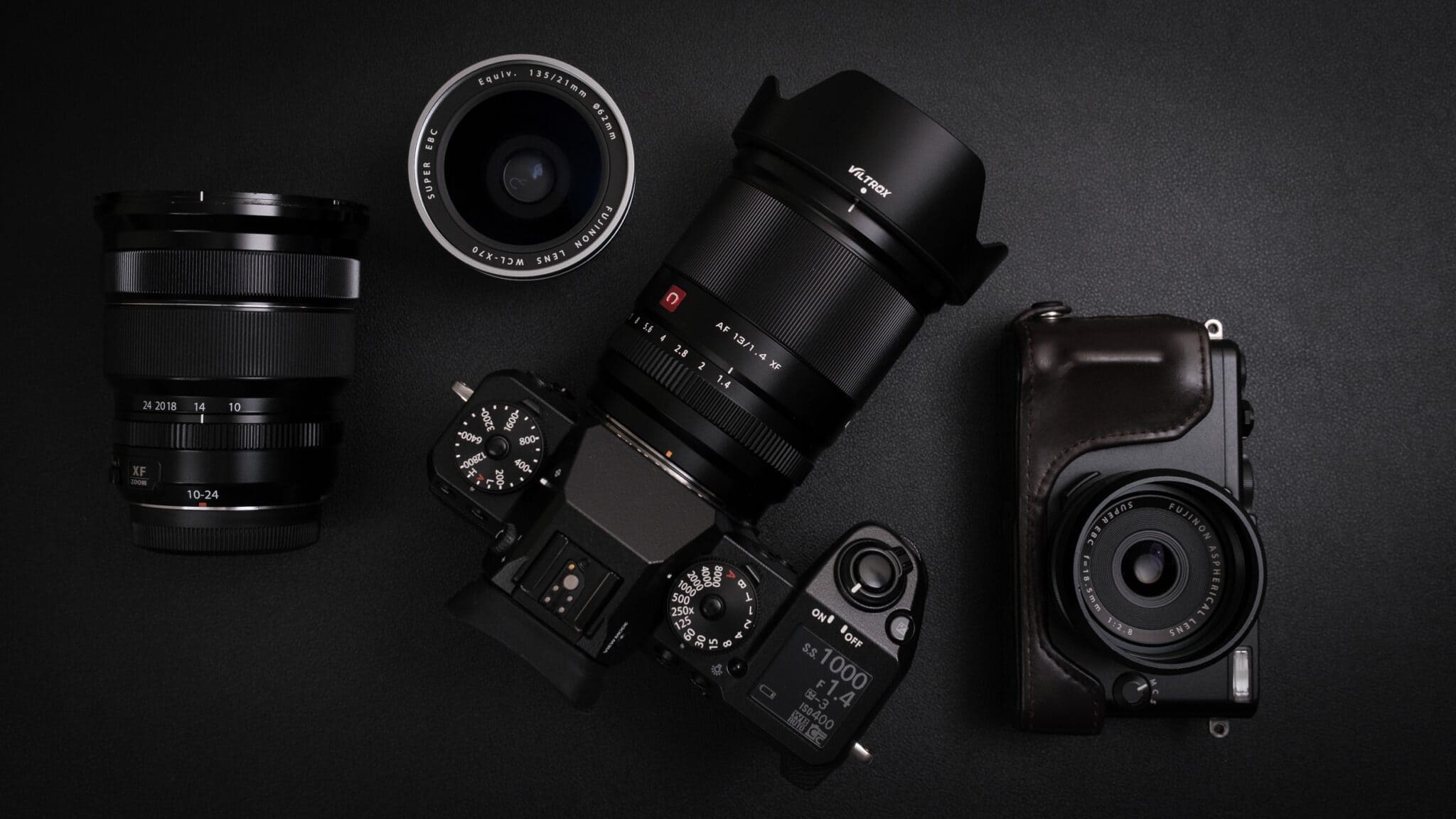
Post-Processing: Taking Your Images to the Next Level
For Fujifilm camera users, picking the right Fujifilm X-mount lens is the first step to creating amazing photos. But the magic of photography doesn't stop when you press the shutter. Post-processing is a vital part of enhancing your work.
However, post-processing can be time-consuming and meticulous. When dealing with a large batch of photos, repetitive tasks can quickly become frustrating. That's where a reliable tool can make all the difference, improving both your efficiency and your creative experience.
If you want to streamline your post-processing workflow, we highly recommend TourBox — a creative console designed specifically for creative professionals.

Unlike traditional keyboards and mice, TourBox lets you quickly access commonly used functions without constantly switching hand positions or memorizing complex shortcuts.
It's especially helpful in software like Photoshop and Lightroom, where frequent adjustments are the norm. TourBox can significantly boost your productivity while reducing hand fatigue.

Ultimately, we choose lenses to capture beautiful moments, and post-processing is about perfecting how those moments are presented. So, as you enjoy the thrill of shooting, why not make your editing process more efficient and enjoyable?